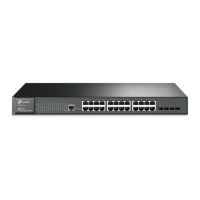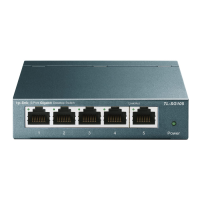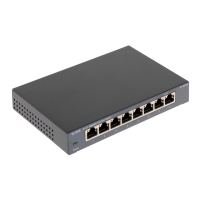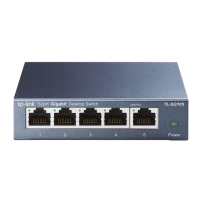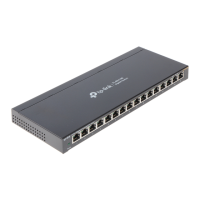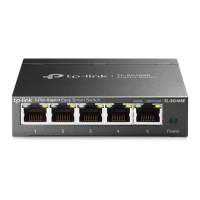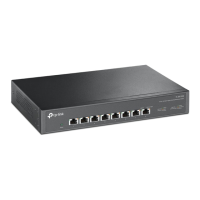159
2
Configure the mapping relation
between the CoS and the TC
Required. On QoS→DiffServ→802.1P Priority page,
configure the mapping relation between the CoS and
the TC.
3 Select a schedule mode
Required. On QoS→DiffServ→Schedule Mode page,
10.1.3 802.1P/CoS Mapping
On this page you can configure the mapping relation between the 802.1P priority tag-id/CoS-id
and the TC-id.
802.1P gives the Pri field in 802.1Q tag a recommended definition. This field, ranging from 0-7, is
used to divide packets into 8 priorities. 802.1P Priority is enabled by default, so the packets with
802.1Q tag are mapped to different priority levels based on 802.1P priority mode but the
untagged packets are mapped based on port priority mode. With the same value, the 802.1P
priority tag and the CoS will be mapped to the same TC.
Choose the menu QoS→DiffServ→802.1P/CoS Mapping to load the following page.
Figure 10-8 802.1P Priority
The following entries are displayed on this screen:
Priority and CoS-mapping Config
Tag-id/Cos-id: Indicates the preceden
ce level defined by IEEE802.1P and the
CoS ID.
Queue TC-id:
Indicates the priority level of egress queue the packets with tag
and CoS-
id are mapped to. The priority levels of egress queue
are labeled as TC0, TC1, TC2 and TC3.
relation between tag/cos and the egress queue is: 0-TC1
,
1-TC0, 2-TC0, 3-TC1, 4-TC2, 5-TC2, 6-TC3, 7-TC3.
Note:
To complete QoS function configuration, you have to go to the Schedule Mode page to select
a schedule mode after the configuration is finished on this page.
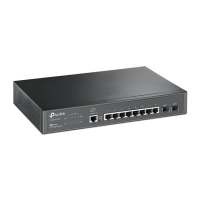
